If you start asking questions about sustainable clothing fabric in the same way that you look at food labels, and ask questions about the food that you eat, you can help to fundamentally change the way clothes are made. Before we list sustainable fabrics, we will look at what is a sustainable fabric and the list of types of fabric. This will help consumers make mindful and conscious choices.
What is a Sustainable Fabric?
So what are sustainable fabrics? Sustainable clothing fabric is derived from eco friendly resources, such as sustainable grown fiber crops, and also recycled materials. But it also refers to how the eco fabric is made.
The method of creating the fabric and the production processes used, affects the environmental impact, and determines the sustainability.
A wool sweater that uses intensive farming, or viscose production that causes deforestation, might be natural, but is not sustainable in fashion. Man-made fabrics can be eco friendly if renewable resources are used, specially if organic cellulose or waste from other production chains, are used.
Why eco friendly fabrics?
Fashion is one of the dirtiest industries and is responsible for a huge amount of pollution. It also impacts and contributes to: microplastic pollution, consumption of water, soil degradation, destruction of rain forest, greenhouse gas emissions and epic proportions of landfill waste. 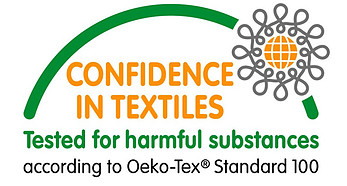
One of the first questions you should ask yourself is, what are my clothes made of? The fabric choice directly affects:
- The sourcing of the raw material, such as farming practices and the impact of drilling for petroleum for making synthetic fibers.
- Processing of the material: are there chemicals required to turn the raw material into a fiber?
- End-of-life prospects of the garments, so the ways in which clothes can be disposed of. Is it recyclable, compostable or biodegradable?
Environmentally conscious shoppers should also ask the question. How is it grown? And this is not the only question that should be asked, but also how is it dyed and finished?. Both these processes are traditionally dirty and harmful to the environment, with the most chemically intensive steps in making clothes.
Once you know what to look for, environmentally friendly fabrics are mostly easy to find. So let’s have a look at the types of fabrics list.
List of Types of Fabrics
Environmentally friendly fabrics can be natural or man-made, recycled or created from food waste. Here is the list:
- Natural fibers
- Animal fibers: these include wool, silk and leather
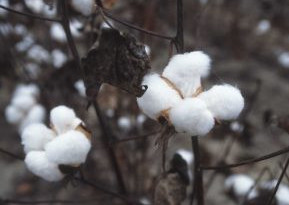
- Plant fibers: cotton, linen, hemp, bamboo, ramie, coir and coconut, rubber, cork, nettle.
- Mineral fibers: these come from geological processes like asbestos, ceramic (glass fiber) and metal (aluminum) fibers. These fibers are mainly used in the building and construction industry. As they are not commonly used in textile manufacturing, we will not look at them in more detail here.
- Animal fibers: these include wool, silk and leather
- Man made fibers or Artificial fibers: These are produced from natural raw materials, but are processed with chemical processes that have a varying impact on what is a sustainable fabric.
- viscose or rayon, lyocell, modal, cupro
- seaweed fabric
- agricultural waste products such as banana, pineapple, orange, coffee, milk
- Synthetic fibers: Synthetic fibers do not exist in nature and are all derived from petrochemicals, so is the least sustainable. Virgin plastic like polyester, nylon, polyurethane and acrylic are not sustainable fabrics as they are made with petroleum. Recycled plastics like Econyl, made from recycled nylon, and recycled polyester, are on the sustainable fabrics list. This is because it is made in a closed loop and preventing plastic waste going into landfill, and polluting our water ways and oceans.
Let’s list sustainable fabrics that are available.
Sustainable Fabrics List
We will first look at the sustainable natural fabrics, most of which are plant based. When it comes to this list of sustainable fabrics and what are sustainable fabrics, there is no order of importance.
1. Organic Cotton
Cotton is the most famous natural fiber and makes up 50% of the world’s fiber needs, but the majority is grown using toxic chemicals. So it is important to choose organic cotton, which is grown without harmful chemicals and is considered environmentally sustainable. Cultivating organic cotton is known to improve soil quality.
Organic cotton is grown from plants and seeds that have not been genetically modified. No synthetic or toxic chemicals, like pesticides and fertilizers, are used during the growing and production cycle. Because no GMO’s (genetically modified organisms) are used, organic soil matter can be built through crop rotation, inter cropping and composting.
If you have allergies or suffer from skin diseases, wearing organic cotton clothing, like Thought, will greatly improve those conditions as you would not be exposing your skin to toxins.
2. Recycled Cotton 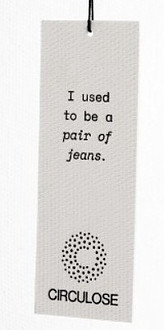
Post consumer waste or post-industrial waste is used to produce recycled cotton. That means that you favorite denims, could be made from fabric scraps obtained from industry, or other recycled cotton garments.
Through recovery of used and unsold garments, Renewcell, a Swedish company, is recycling cotton to make a cellulose fiber called circulose. Old clothes, like the worn out pair of jeans at the back of your cupboard, is transformed into a pristine, natural material that does not require any cotton fields, oil or sacrificing trees.
Recycling garments help to prevent fashion waste from ending up in landfill.
3. Bamboo
Bamboo is one of the fastest growing plants on earth and it renews itself after harvesting. It survives on rainfall alone and consumes more CO2 than many trees. It is increasingly used in the fashion sector as it is a sustainable clothing fabric, but it does depend on the manufacturing process that is used to make the bamboo fabric.
Bamboo is ideal for hypoallergenic underwear and read more about it in this post on 5 Best Men’s Eco Friendly Underwear Brands.
Mechanically processed bamboo is the best way to wear bamboo, whereas chemically processed bamboo involve chemicals that are not eco friendly. So try to avoid bamboo viscose, which is using a chemical process, whereas bamboo lyocell is made in a closed loop.
Bamboo is a highly breathable, soft and smooth fiber. Features of this fiber include antibacterial and anti fungal qualities and no microplastics. Bamboo is also a sustainable, renewable flooring alternative that is eco friendly, affordable and durable.
4. Hemp
When we list sustainable fabrics, hemp is one of the most eco friendly natural fibers. 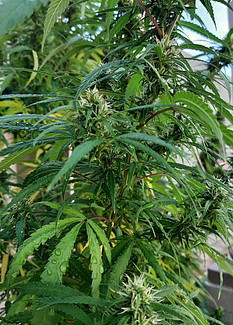 It requires very little water, only about 5% that is required to grow cotton. It is a high yielding crop and is healthy for the soil to grow hemp as the plant absorbs toxins in the soil.
It requires very little water, only about 5% that is required to grow cotton. It is a high yielding crop and is healthy for the soil to grow hemp as the plant absorbs toxins in the soil.
Production of hemp is particularly sustainable as it is one of the fastest growing plants. It can reach up to 7 meters in height after only three months of sowing and can be harvested 120 days after planting. No GMO seeds are used and, as it is less vulnerable to insects than other crops, little or no pesticides, fertilizers and herbicides are needed.
Hemp have stalks that look a bit like bamboo and can be planted very close together, making it a very high yielding crop. It is one of the few natural fibers that does not require chemical solvents to be bleached.
Hemp has many benefits, including being hypoallergenic and anti-microbial. It is considered a carbon negative raw material as it actually absorbs CO2 from the atmosphere. Apart from being used to make sustainable clothing fabric, it is also used in the production of eco friendly vegan hemp shoes.
5. Linen
Linen is derived from the flax plant and is very sustainable. The flax plants are resilient and can grow in poor soil, requiring very little water and fertilizer to grow. Cultivation of the flax plant is far more sustainable than cotton, putting linen fabric inherently under the label of sustainable fashion and on the sustainable fabrics list.
Flax fiber is the strongest natural fiber, making linen textiles long-lasting and durable. Linen fabric is naturally antiseptic and hypoallergenic, making it suitable for allergy sufferers.
Linen is biodegradable and recyclable, so no need for it to go into landfill sites, thus reducing the carbon footprint.
6. Ramie 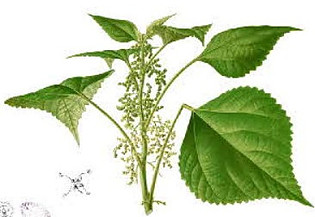
Ramie is one of the oldest fiber crops and is gaining popularity as one of the sustainable fashion textiles. It is eco friendly and can be grown without the use of herbicides, pesticides or chemicals.
Ramie is a flowering plant in the nettle family. The fabric is made from the stalks of the plant and flowers. The process of making the fabric is very similar to linen production.
Discover more about this sustainable natural fabric in this post on What material is Ramie.
7. Nettle
Fibers from the common stinging nettle plant, a common weed in most gardens, have been used since ancient times to produce cloth. The nettle plant grows almost uncontrollably, making it sustainable. It is naturally resistant to pests and diseases, (it is a weed after all!).
Although the production of nettle fabric is labor intensive as it is done by hand, it means no harmful chemicals are used and no pollution caused as is often the case with the production of other textiles.
8. Silk 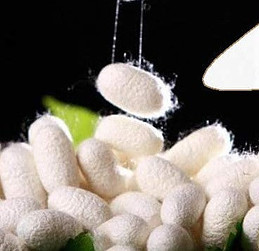
Silk is a natural protein fiber and the best-known silk is obtained from the cocoons of the larvae of mulberry silkworms. Silkworms only eat natural food, which are mulberry leaves, or leaves of specific types of plants. Silk fiber processing has a very low environmental impact in terms of atmospheric emissions.
The fiber remains natural throughout the entire processing period, thus putting it on the sustainable fabrics list. Silk fiber is 100% recyclable and reusable. It is naturally hypoallergenic and brilliant for use by asthma and other allergy sufferers.
For silk to be eco friendly and sustainable, the larvae must not be killed in the process. It can be created after the larvae has crawled out of the cocoon, instead of boiling it alive to extract the silk.
Recycled Synthetic Fabrics
On the list of types of fabric is also fabrics that come from recycled plastics. Recycled fabric are made from materials that are reintroduced into the production cycle. It could be recycling used clothes or surplus production or waste.
Recycling is an excellent solution to the problem of non-biodegradable materials. The Global Recycled Standard is the control body for recycled fibers that certify the sustainability of recycled fabrics.
Choosing recycled polyester or econyl recycled nylon, is a more sustainable choice than virgin plastic.
9. Econyl Recycled Nylon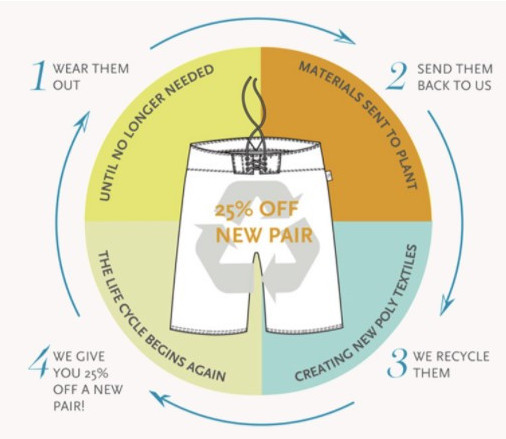
Econyl, a recycled nylon fabric, is made by an Italian company using ocean plastic waste, abandoned fishing nets and industrial fabric waste. It uses a closed loop system and means no need to produce virgin plastic.
It has opened up endless possibilities for making sustainable swimwear and sneakers from recycled plastics .
Unfortunately, recycled plastics can still have microplastics released, that end up in our waterways, so always wash your sustainable swimwear in a Guppyfriend wash bag.
10. Recycled Polyester
Plastic is a huge global waste problem. So take the plastic bottles that are already littering our countryside and waterways, and turn them into a useful fabric. Post consumer PET bottles are used to make recycled polyester. Recycled polyester is used in footwear, active wear and sustainable outdoor jackets.
By recycling the plastic bottles, it prevents plastic from going into landfill, or ending up in our oceans and waterways. Recycled plastic is far better for the environment than petroleum based new plastic. Read more about the use of recycled plastic in this post on best swimwear for men from ocean plastic waste.
Food waste fabrics
When we list sustainable fabrics, using agricultural food waste to create products, is on the list of types of fabric that normally has a low environmental impact. But it does depend on the processes used and the addition of chemicals. Innovative textile fibers reduce industrial waste so let’s have a look at some of these less common sustainable clothing fabric.
11. Pina from Pineapple Leaves
Pineapple fiber is obtained from the leaves of the pineapple plant, so what is an existing byproduct of the pineapple harvest, can be converted into cloth. Cloth made from pineapple fiber is called Pina, and is sheer and lightweight. Pinatex is a pineapple leather and is discussed in this post on the 15 Best Sustainable Sustainable Materials for Footwear.
12. Banana Fabric
Natural banana fibers are obtained from an agricultural residue. Banana stems, for many years considered to be a waste product, is now being used to produce a silky fiber. The production of banana textiles is eco-friendly and sustainable, and you can read more about this innovative textile in this post on Innovative Textiles Solutions.
13. Orange Fiber Fabric 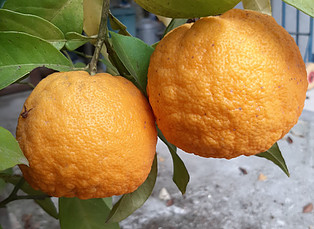
A Sicilian company is making orange fiber fabric from citrus juice byproducts. Citrus pulp, the residue that is left when orange juice is commercially produced, is transformed into a silky fabric. Industrial waste products of citrus is transformed into a sustainable and biodegradable textile.
Orange Fiber is a citrus cellulose yarn. Citrus cellulose is extracted from the “pastazzo”, to create a polymer that is then spun into yarn. As it is a patented process, there is not much known about the production methods, but you can read more about this innovative textile made from agricultural food waste, in this post on 5 Innovative Textile for vegans.
14. Milk Fiber Yarn and QMilk
Waste milk that is not fit for human consumption, is used to produce milk fiber. Milk is sourced as a by-product of the dairy industry. A milk protein, cassein, is then used to produce the milk fabric.
There are 2 ways of producing the fabric:
- A blend of casein protein from milk and acrylonitrile, which is the same chemical that is used to make acrylic, or
- A German company is making QMilk from pure casein protein. QMilk has developed a process that is 100% natural and uses renewable resources. No plasticizers, solvents or chemical cross linkers are used. QMilk is natural, compostable, silky smooth and flame retardent and will biodegrade in a few months in the environment.
So the extraction method that is used, will affect sustainability and determine what is a sustainable fabric. Discover more about milk fiber yarn and QMilk here.
15. Viscose and Lyocell
Viscose, often called rayon, is a man-made cellulose fiber. Although it comes from a natural raw material, namely wood pulp, it is artificially made. Viscose is made from eucalyptus trees, whereas modal from beech trees,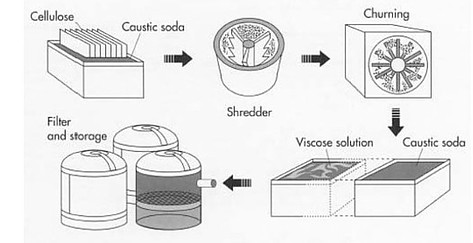 but they are both cellulose fabrics. Most production methods are not sustainable, as it undergoes several chemical processes.
but they are both cellulose fabrics. Most production methods are not sustainable, as it undergoes several chemical processes.
To make viscose, the basic cellulose is treated with a solution of caustic soda. Carbon sulfide is then added and more caustic soda is added.
Disposal of these toxic chemicals is often not done in an environmentally friendly way, making the whole process unsustainable.
It also happens that the chemicals used, are absorbed by our skin.
Increasingly the lyocell process, which uses N-Methlymorpholine N-Oxide as the solvent, is used to make man-made fabrics. Lyocell has become the generic name for cellulose fiber and is obtained by a closed loop organic solvent-spinning process. Lyocell is known in the USA under the brand name Tencel.
So when it comes to the list of types of fabric, and what is a sustainable fabric, if you see Lyocell, it is the production method that is used. It is more eco-friendly as little waste is produced and any solvents or water is reused.
16. Seaweed
Seaweed is on the sustainable fabrics list as it is a renewable cellulosic fiber which is carbon neutral. Fabric made from seaweed is using the same lyocell process as Tencel and some bamboo, but seaweed is the plant source. Sustainable manufacturing methods conform to Oeko Tex Standard 100 that follows sustainable practices.
The production to make what is seaweed fabric then, takes place in a closed loop. Fabric is eco friendly and 100% biodegradable and you can read more about seaweed fabric in this post here.
17. Coffee Fabric 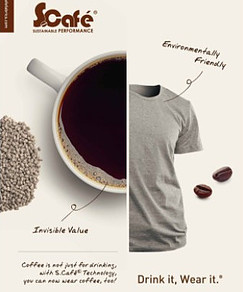
Coffee fabric is made with a combination of recycled plastic PET bottles, and waste coffee grounds.
The patented procedure to obtain the coffee fiber, is to mix the coffee residue with recycled plastic bottle fibers and re polymerize it. It is then spun into a coffee yarn.
S.Café yarn contains 5% upcycled coffee grounds and 95% recycled PET plastic bottles.
So when we list sustainable fabrics and look at coffee fabric, it is the combination of recycled plastic and using agricultural waste, that adds it to the sustainable fabrics list.
Read more about S.Café and other fabric made with coffee grounds and using sustainable technology, in this post.
18. Wool
Wool is a natural fiber and some processes to produce wool, are mechanical. Some of the detergents and auxiliaries used in scouring, can be eco-toxic and these components need to be removed from waste water.
Chemical treatments to make wool fibers stain resistant, moth proof and shrink resistant, are often used. These chemical treatment all have an effect on the environment and is not sustainable. Accreditation schemes now exist to provide reassurance that the wool has been sustainable produced, using environmentally and ethically acceptable conditions.
These are specific wool certification to look out for: Responsible Wool Standard (RWS), Certified Organic Wool, Certified Animal Welfare Approved, Certified Humane Label, Soil Association Organic Standard (Climate beneficial by Fibershed) Woolmark.
Wool can biodegrade naturally, and is better than petroleum based synthetics like acrylic or polyester, when it comes to knitwear.
There are lobbyists that argue that sheep are not treated humanely. Rural and artisan communities around the world often rely on income that they receive from materials that might not be vegan, or even vegetarian. It is important to remember that it provides a livelihood to those that farm, and live in the community.
19. Cupro 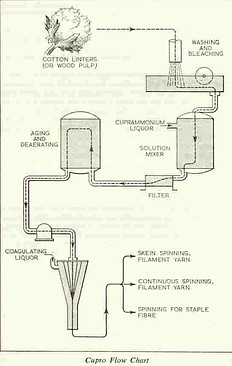
Cupro is a man-made semi-synthetic fabric which is made with cotton linter, a byproduct of cotton farming. Cotton fibers are subjected to chemicals to turn it into a semi-synthetic fabric. It is done through a closed loop process that is similar to making viscose and modal. Nearly all the water is recycled and reused.
The purpose of cupro is to reduce the waste created by cotton production, but the toxic chemicals used, means it is not a sustainable process.
Although a natural fiber is used, because of the amount of chemicals that are used, it is one of the lowest when we list sustainable fabrics.
Materials that are not often used as a sustainable clothing fabric, like cork, natural rubber and fruit based vegan leather, is discussed in this post on 15 Best Sustainable Footwear Materials.
Certifications and Standards
Do look out for these certifications that are used for organic fibers and recycled materials, as well as certification for sustainable obtained wood 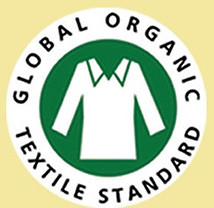
- Global Organic Textile Standard (GOTS)
- Organic Content Standard (OCS)
- USDA Certified Organic
- Oeko-Tex 100
- Global Recycle Standards (GRS)
- Recycled Content Standard (RCS)
- Forest Stewardship Council (FSC)
Final thoughts
Sustainable fashion is more than just the sustainable textiles that we have in our green wardrobe. It’s a combination of many factors, including supply chain transparency, ethical business practices, minimal impact policies and programs that give back to communities.
If you have any questions about what is a sustainable fabric, or found another fabric that I should include on this sustainable fabric list, then please leave your comments below and I will get back to you.

Wow, Lin, You out-did yourself. What a list. I thought I was aware of some eco-friendly cloth, but I surely did not think of all you have found. Reclaimed plastic, I knew, but pineapple! Bamboo, I knew, but nettles and coffee! Keep up the good work! We need to be made aware of the ways we can help save the planet!
There are indeed several sustainable fabrics that didn’t exist a few decades ago, like recycled plastic used for swimwear.
Great article. The article is very detailed. In addition to the sustainable fabrics mentioned in the article, there are actually muskin, cork leather, mango leather, grape leather, mango leather, and Desserto leather and coconut leather. My article has details.
https://www.hzcork.com/the-7-top-vegan-leathers/
Thank you for sharing. These leathers, together with Frumat apple leather, is discussed in this article 15 Best sustainable materials for shoes.
Silk is ***ONLY*** Eco and sustainable if the larvae is NOT killed in the process. It actually CAN be created after the larvae breaks out of the cocoon and not having to be boiled alive to extract the Silk. Please do add this consideration in your article. It’s important that people become aware of this.
Thank you for pointing this out and I will add this clarification to the article. All the best, Liné
To start off, I personally have never considered where the materials that my clothes are made of come from. Reading this article has definitely helped me understand the importance of purchasing long lasting clothing options to reduce waste. Products made with recycled fabrics are certainly going to be the next option I look for when buying new clothes!
Using sustainable fabrics for clothing is far better for the environment, and often also for your health. All the best, Liné
Very interesting this post! Never thought that there were so many types of fabrics. Also did not know that there was eco friendly fabrics. This is for sure a page that I will keep in my bucket list. I will be for sure spreading the word about these fabrics so that people on my circle are more aware.
There are indeed many different types of fabrics and we do have more sustainable choices these days. All the best, Liné
Your article was very informative. I never really thought beyond organic cotton when thinking about Eco fabrics. I never considered that recycled synthetic fibers could be considered an eco-fabric. I thought it was nice that you included a link to the bag for washing clothes. I’ll bet my wife would love that. She is already using washing detergent tabs that are coming from a company in Michigan I think – ships in a cardboard box and there’s no plastic.
Great that you get washing tabs that come without plastic, so I agree, your wife will find the washing bag very useful.
This is a great article.
There is a lot of information about what is eco and what is not, and honestly, I have been very confused.
So I did research on the Best Sustainable Fabrics in relation to fashion, and I am glad I found this article.
I also find the list of certifications very useful.
Thanks a lot for your effort
You are welcome and I am pleased to hear you found the certifications useful.
Fashion you give me rapture, the food of the mind.
The love to passion, guided by fashion
Hi, the best you produce named by eco-friendly fabrics
IT’s held the best technical ways,
Aim, to keep you the most beautiful one,
your fitness blooms ways and ways,
You’re dressed in eco fabrics.
Ok, the fact I have seen that eco fabrics are wonderfully in 19 categories, wow!
My question is that Does the company have any plan in the future to add more categories?
Thank you for your poem to what is a sustainable fabric. With the advance in technology, it is quite possible that the sustainable fabrics list might grow.
Thanks for this insightful article. I didn’t realize there were that many sustainable fabrics available. I had heard of a few of the ones mentioned, but Ramie and Nettle really surprised me.
I am noticing more clothing companies are heavily advertising eco-friendly clothes, big brands such as Levis, American Eagle, and H & M, are really gearing towards sustainable clothing. I think it is great and it’s about time. When you say the fashion industry is one of the dirtiest, I am not surprised at all. I hope that more clothing companies will jump on board and do their part to reduce pollution and waste, and help save our environment.
I think this article will really make people aware of the clothing and fabrics that they buy. It has opened my eyes, and I will certainly be spending my money on sustainable clothing in the future.
Jenny.
Hi Jenny, thank you for your kind comments and it is good to find that more well known brands are supporting and using what are sustainable fabrics.
Wow. Thank you for the enlightening article. I have never asked myself the very important question that you have posted here. ‘ What are my clothes made of?’ and if it is environmentally friendly or not? How is it grown? and How is it dyed? Thank you for enlightening us on different types of fabrics. I will be paying attention from now on .
It is important to be aware of how products are made and what goes into them, specially when it comes to harmful chemicals.
Wow, this is an amazing article! I had no idea that there were now so many options for sustainable fabrics. I love coffee, and the fabric made from recycled PET bottles and coffee grounds made me smile. Thanks for this very thorough and well-written article. I will definitely use it as a resource when looking for sustainable fabrics. This list makes the shopping process easier, thank you!
Hi Ann, it is good to hear that your shopping process will now be easier.
Hello there! This is an informative read. Personally, I never really paid attention to the type of fabric used to create my clothing. It makes sense to be aware of them so that one can help do their part in protecting the environment. Going through your list, I had no idea bamboo can be used in clothing. I also was unaware that certain parts of fruits can be used as well. Thanks for the education.
Bamboo clothing is very soft and kind to your skin, as well as being kind to the planet. I love the bamboo clothing that I have!
Hello Line, you have done a fantastic job in this article, more especially on the sustainable fabrics which is also natural fabrics.
Am a big preacher of organic and natural products and their health benefits and benefits to our planet and our environments, this has enable me and my family made switch to organic cotton products from conventional cotton product and it feels so good I tell you.
I hope more people read this article and chose the best or switch to Eco- world
Thank you, when I look at the list of types of fabric, my first choice is always natural fibers. But it is great that recycled materials and recycled plastics can be used as what is a sustainable fabric.
I thought this was an amazing, wonderful article. The sustainable fabrics listed are very informative and highly engaging. I think you do a great job explaining the competitive advantages and why this is a better eco-friendly alternative. Your pictures enhance the quality of your post.
Personally, I was thinking about starting a clothing niche before I decided to go with meditation (Miracle Meditations).
Anyways, the biggest winning point in your article is when you explain who these sustainable fabrics are certified by and more importantly when you open the door for discussion to potentially improve your content. Thanks for the great read!
Thank you for your kind comments and I enjoyed researching and compiling the list of types of fabric and then list sustainable fabrics that are used in the fashion industry.
I agree with you when you say the fashion industry is one of the dirtiest industries in the world. A lot of Fashion based materials are made from a petroleum product, worst of all are things like lips balm. They are not only harmful to the environment but to our health. like you said, it is time we look at the labels on items of clothing like we will look at labels on food items. That way we will push manufacturers to using eco friendly materials and stop endangering both our lives and environment
If we question more about what is a sustainable fabric and how our clothes were made, we can push producers to use sustainable materials and practices.
I am such an environmentalist, that anything to do with recycling and reusing gets me all interested. This is such a wonder of an article on fabrics that can save us and our planet.
I am in the process of making a Power Point presentation for kids in my class on what all fabrics are sustainable. And your article provided me exactly what I needed.
Thank u.
Aps
I am pleased to hear that my post helped you on teaching the kids what is a sustainable fabric.
Hello. Very interesting! Thank you for putting together this list. This post is worth sharing. Spreading out the word about these fabrics. Sustainable or ecological fashion is based on the manufacture of clothing from ecological fabrics, i.e. fabrics that, from the planting of their fibers to their manufacture, are free of chemical products and respect the environment.
Thank you Ann, you are welcome to share this sustainable fabrics list.
I know that many of us want to live in a way that is harmonious with the life on our planet Earth. I love that research has been done to improve upon practices that were detrimental to our environment and can help us move forward in smarter ways. I personally have some bamboo products and find them to be very high-quality — I think it’s a win-win when you get something that is sustainable and luxurious too!
I agree that it is awesome that there are practices and materials that are in harmony with the environment.